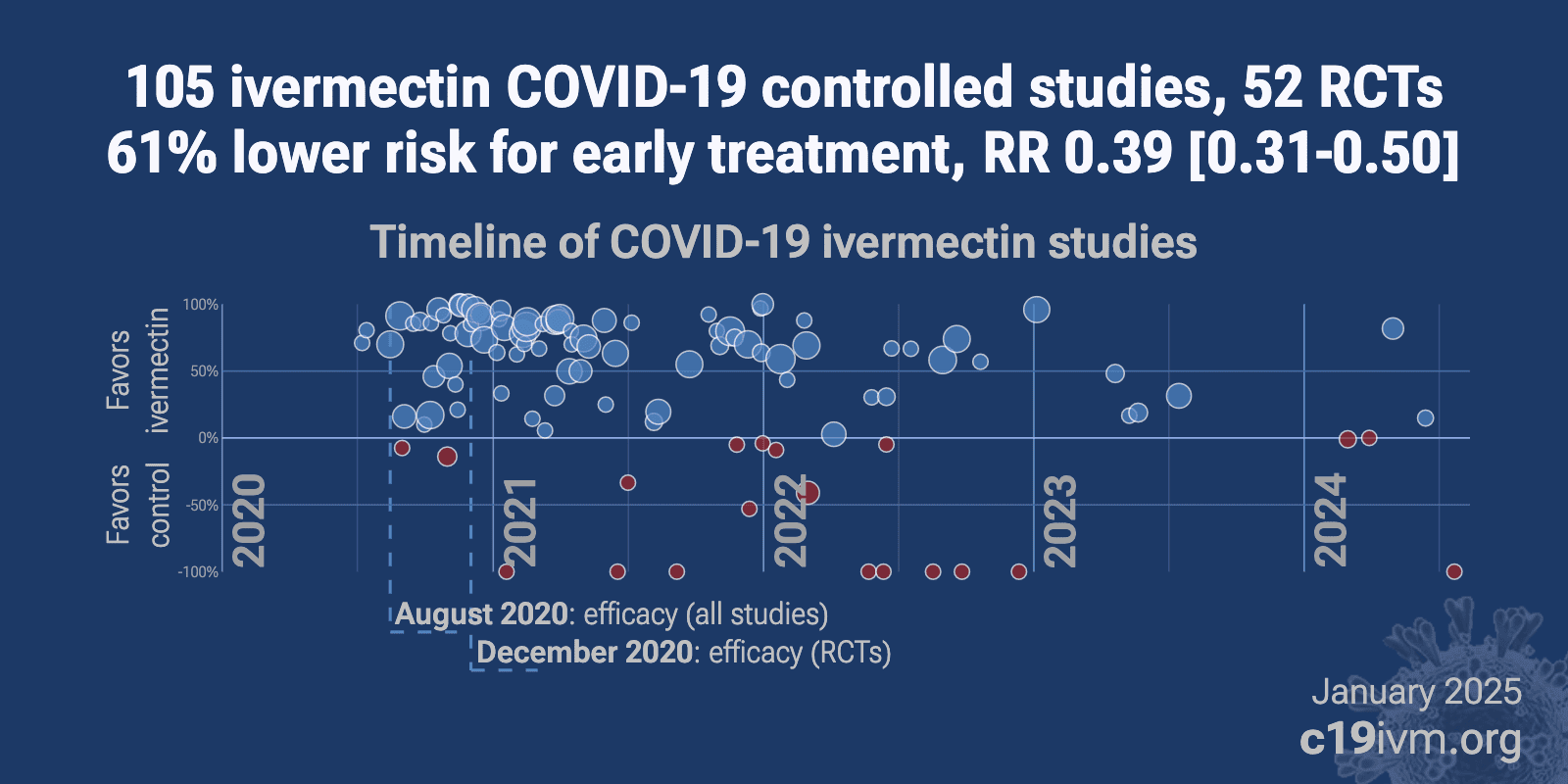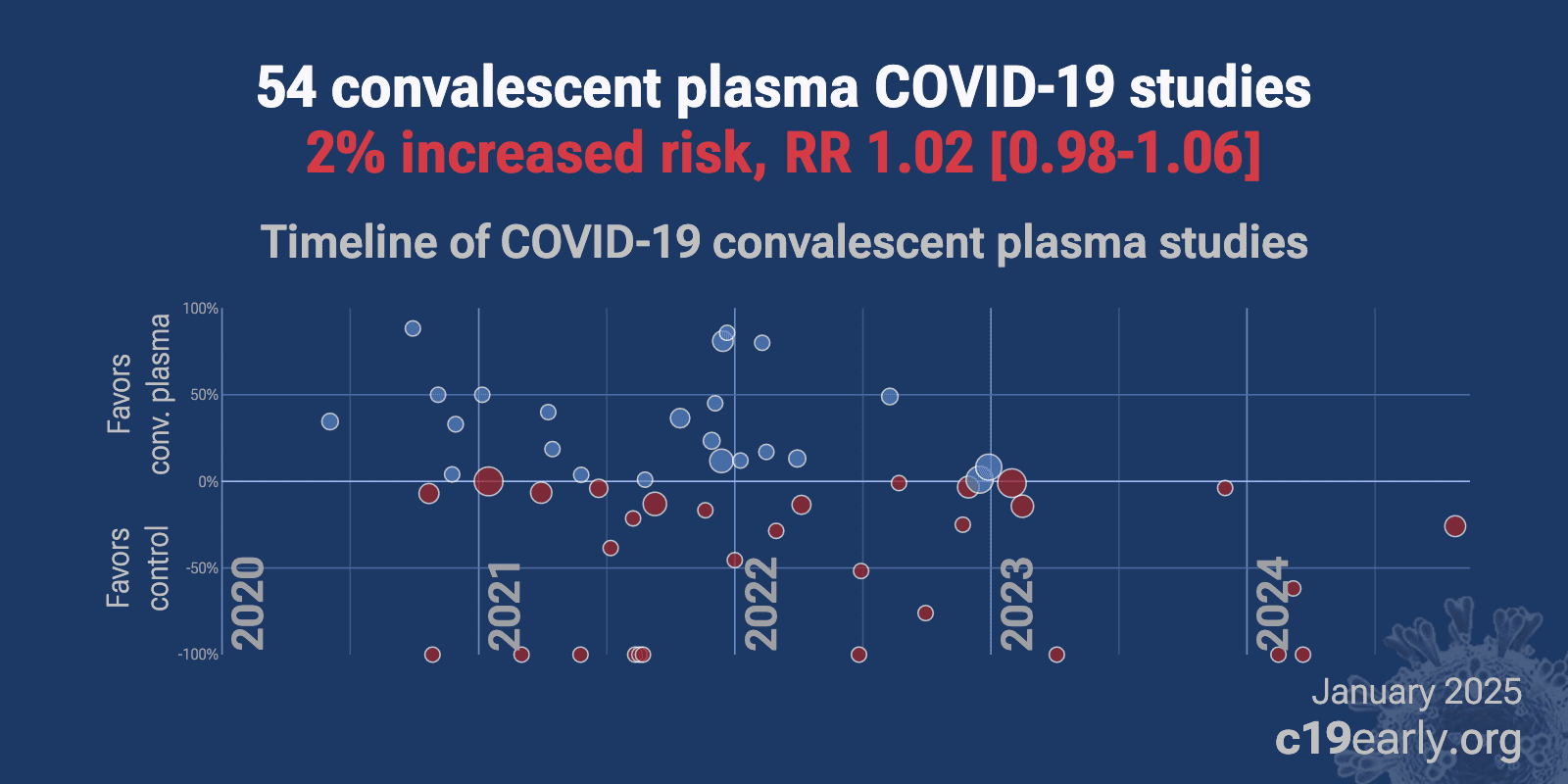Ivermectin is effective for COVID-19. 126 global studies
Early treatment - 67% improvement, p < 0.0001 Late treatment - 36% improvement, p < 0.0001
Early treatment - 67% improvement, p < 0.0001 Late treatment - 36% improvement, p < 0.0001







Comment